Meteorological Sensors & Meteorological Stations
Table of Contents What are meteorological sensors? Meteorological sensors are specialized equipment for understanding and measuring climate change. These sensors
It is a plastic rainfall gauge on a weather station. Compared with the standard stainless steel tipping bucket rain gauge, it is a more commercial rain gauge with a low price. It adopts the working principle of the standard tipping bucket rain gauge, but due to material problems, accuracy and service life are slightly lower than stainless steel rain gauge. If you are a beginner in the rain gauge, or if you have a limited budget and want to buy a cheap rain gauge, then our abs tipping bucket rain gauge will be your best choice.
The following are all types of rain gauges that our company produces and sells according to different user needs. Please leave us a message about the product model you are interested in, and we will provide you with manuals. ABS tipping bucket rain gauge is the cheapest.
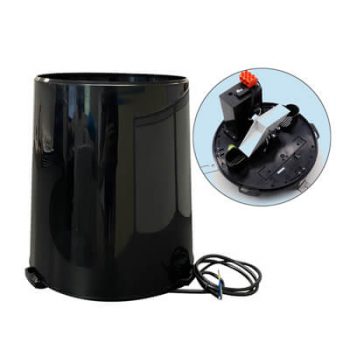
Tipping bucket material: ABS plastic
Accuracy: ≤±5%
Resolution: 0.5mm
Height: 260mm
Rain-bearing mouth material: ABS plastic
Output: RS485/0-5V/0-10V/4-20mA/Pulse
Tipping bucket material: ABS plastic
Accuracy: ≤±3%
Resolution: 0.2mm or 0.5mm
Height: 330mm
Rain-bearing mouth material: ABS plastic
Output: RS485/0-5V/0-10V/4-20mA/Pulse
Tipping bucket material: stainless steel
Accuracy: ≤±3%
Resolution: 0.2mm or 0.5mm
Height: 330mm
Rain-bearing mouth material: 304 stainless steel
Output: RS485/0-5V/0-10V/4-20mA/Pulse
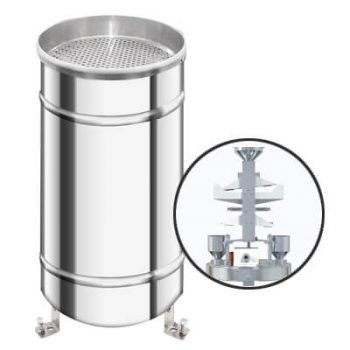
Double tipping bucket material: ABS plastic
Accuracy: ≤±2% (can be customized ≤±1%)
Resolution: 0.1mm or 0.2mm
Height: 400mm
Rain-bearing mouth material: 304 stainless steel
Output: RS485/0-5V/0-10V/4-20mA/Pulse
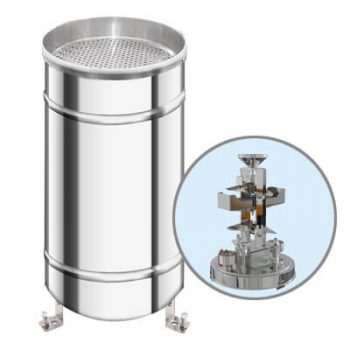
Double tipping bucket material: stainless steel
Accuracy: ≤±2% (can be customized ≤±1%)
Resolution: 0.1mm or 0.2mm
Height: 400mm
Rain-bearing mouth material: 304 stainless steel
Output: RS485/0-5V/0-10V/4-20mA/Pulse
Sense of rain diameter: 6CM
Resolution: 0.1mm
Accuracy: ±5%
Maximum instantaneous rainfall: 24mm/min
Size: 82x82x79.7mm
Output signal: RS485
The tipping bucket of our rain gauge is a three-dimensional streamlined design and is designed with a drooping curved diversion tip. Its appearance is beautiful and smooth, the water tipping performance is better, and it is easy to clean and maintain.
Inner diameter: Φ200mm/8 inch
Resolution: 0.2mm
The acute angle of cutting edge: 40°~45°
Operating Temperature: 0~50℃
Working humidity: <95%(40℃)
Measuring range: 0mm~4mm/min
Accuracy: ≤±7%
Power supply: 10V~30V DC
Output signal: RS485/Pulse
Mounting holes: Three mountings
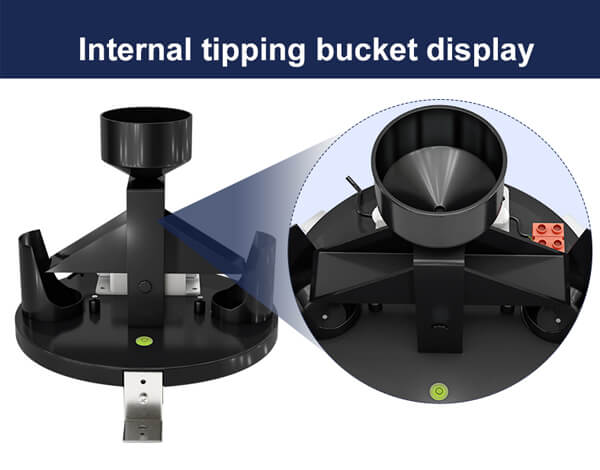
The tipping bucket of our rain gauge is equipped with constant magnetic steel, and the reed switch bracket is equipped with a reed switch. When the equipment leaves the factory, the magnetic steel, and the reed switch have been adjusted at a suitable coupling distance so that the output signal of the instrument and the number of flipping buckets can be determined.
Small size, easy installation, good stability. There is a level adjustment bubble inside the chassis, which can assist the bottom corner to adjust the equipment to the level.
Good linearity, long transmission distance, strong anti-interference ability. The rain-bearing mouth is made of ABS engineering plastic injection molding, with high smoothness and small errors caused by stagnant water.
The tipping bucket component support system is well-manufactured and the frictional moment is small, so the tipping bucket components can be flipped sensitively and work reliably.
The shell of the plastic rain gauge is made of ABS engineering plastics, no rust, good appearance quality. Mesh holes are designed at the funnel to prevent leaves and other debris from blocking the rain flow down.
Our ABS tipping bucket rain gauge can measure precipitation, precipitation intensity, precipitation time, and other parameters for relevant departments such as meteorological stations, hydrological stations, agriculture and forestry, national defense, and field observation stations. It can provide original data for flood control, water supply dispatching, and water regime management of power stations and reservoirs.
Our tipping bucket rainfall gauge is composed of an integrated shell, filter, funnel, reverse flow dumper, terminal block, leg bracket, reed switch, control box, rain gauge base, etc. Among them, a tipping bucket shaft, around the horizontal bubble, a dry reed switch bracket, and a signal output terminal are installed on the rain gauge base. Unlike other tipping bucket rain gauges, the tipping bucket sleeve of our rain gauge is an integrated positioning structure, and the tipping bucket is installed in the shaft bearing through the tipping bucket shaft. The internal structure of our rain gauge has been assembled before leaving the factory, and there is no need for on-site installation of the internal structure, which brings convenience to on-site installation.
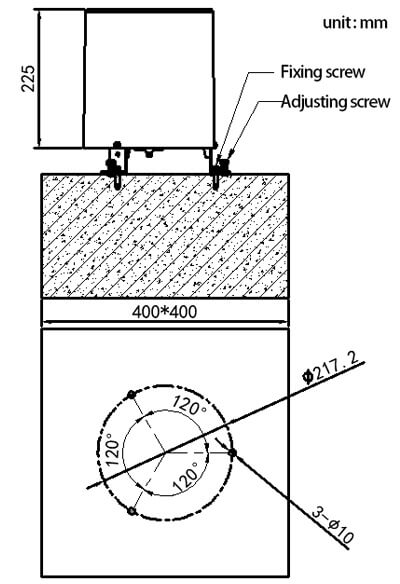
When installing the outdoor ground and roof, first make the cement installation foundation according to the requirements, and the plane of the cement foundation should be horizontal. The size of the cement installation foundation is generally a 40cm×40cm square base with a height of not less than 30cm or a circular base with a diameter of 40cm. It is required that the height of the rain-bearing mouth of the instrument is 70cm from the ground level, and no shelters higher than the rain-bearing mouth of the instrument are allowed within 3 to 5 meters around the mouth of the instrument.
Install a fixed rain gauge to adjust the level of the rain opening
Drill 3 mounting holes with a diameter of 10 cm and a depth of 8-10cm on the cement foundation, place the expansion bolts in the mounting holes, and lock them with lock nuts, and then install the instrument base on the 3 height-adjusting support nuts, and adjust the support nuts Use a level to measure whether the ring mouth is in a horizontal state, and finally use the upper lock to fix the instrument.
If you have special installation requirements, please contact our professional technicians.
A rain gauge is a special device used to collect precipitation and to measure the amount of precipitation in millimeters. It is suitable for meteorological stations (stations), hydrological stations, environmental protection, flood control and drainage, as well as agriculture and forestry departments to measure precipitation.
The tipping bucket rain gauge receives rainwater through the rain-bearing mouth, and flows into the tipping bucket through the funnel mouth. When the accumulated water reaches a certain amount (such as 0.02mm), the tipping bucket loses its balance and turns over. The device sends a pulse or 485 signal, and the precipitation can be automatically calculated after accumulating the number of times.
First, the rain gauge needs to be disassembled, re-titrated to adjust the base point, and then the distance of the base point of the bucket turning over is adjusted. (This process requires professionals to operate)
Next, adjust the horizontal bubble inside the rain gauge, and use a small wrench to adjust the horizontal screw so that the horizontal bubble emerges in the center.
Renke stainless steel tipping bucket rain gauge accuracy is ≤3%, the double tipping bucket rain gauge accuracy is ≤2%, and the accuracy of the tipping bucket rain gauge we provide the highest precision is ≤1%.
Rainfall
A tipping bucket rain gauge is a device that automatically measures accumulated rainfall. Its simple operation and accurate measurement make it the most widely used rain gauge.
The three main types of rain gauges are standard rain gauges, tipping bucket rain gauges, and gravimetric rain gauges. Although the basic operation of rain gauges is generally not that different from these major rain gauge types, it is possible to further differentiate how they work and how they provide data.
Renke is a manufacturer with 15 years of production and R&D experience. We offer you a wide range of quality rain gauges, ABS tipping bucket rain gauges, stainless steel tipping bucket rain gauges and optical rain gauges.
Measuring rainfall in a certain area can adjust agricultural production, analyze climate change, conduct hydrological research, etc.
Standard Rain Gauge: One of the easiest places to install a standard rain gauge is at the top of a fence post. Just make sure you choose an open area, level the gauge, and make sure the top of the gauge is higher than the top of the fence post.
Tipping bucket rain gauge: To use the tipping bucket rain gauge alone, you only need to place it on the open ground, ensure that it is level, and there is no obstruction above. When used with a weather station, it can be mounted on top of a weather stand pole.
Rain gauge basically collects water falling on it and records the change over time in the rainfall depth, which is usually expressed in mm.
In order to protect our patented technical parameters, please contact us for a manual.
Table of Contents What are meteorological sensors? Meteorological sensors are specialized equipment for understanding and measuring climate change. These sensors
Due to the strong regional and diurnal variation of rainfall, accurate measurement of rainfall has been difficult to achieve in
The weather sensors are the sensing end of the weather station and collect various weather-related data. The weather station can
A greenhouse is a closed environment that provides optimal conditions for plant growth and promotes plant growth by controlling indoor
What is smart farming? Smart farming is the application of Internet of Things technology to traditional agriculture, using sensors and
The weather station can provide users with comprehensive weather information over the years. Regular maintenance of weather stations is an
What is a tipping bucket rain gauge? A tipping bucket rain gauge is one of the most standard sensor used
A complete set of a weather station is composed of two parts: hardware and software. The hardware part includes various
Table of Contents Do you know where to mount weather station? The weather station should be installed as far as
Rain gauge is a professional instrument for measuring precipitation in a certain area over a period of time. The more
At present, tipping bucket rain gauges, siphon rain gauges, ultrasonic rain gauges, etc. are more common in meteorological monitoring. They